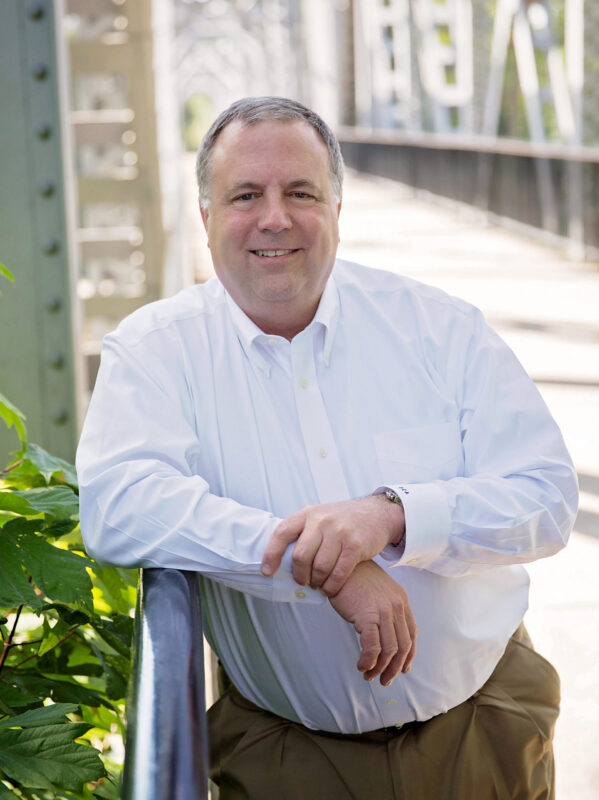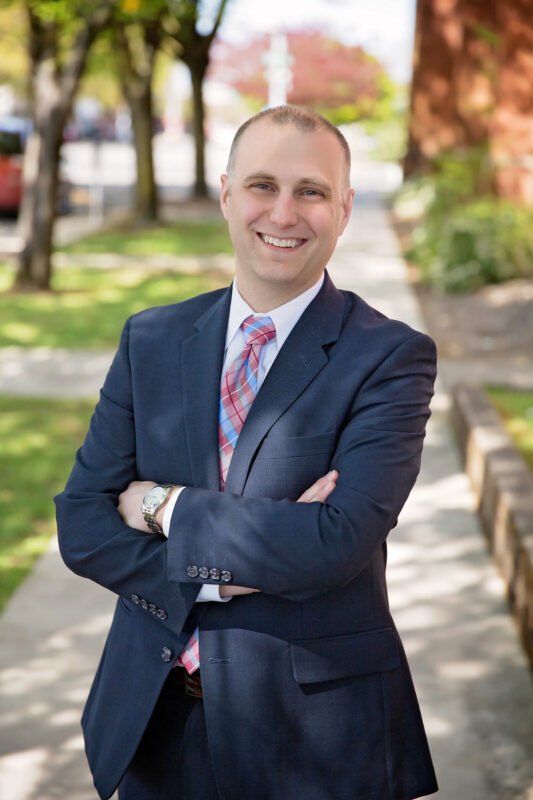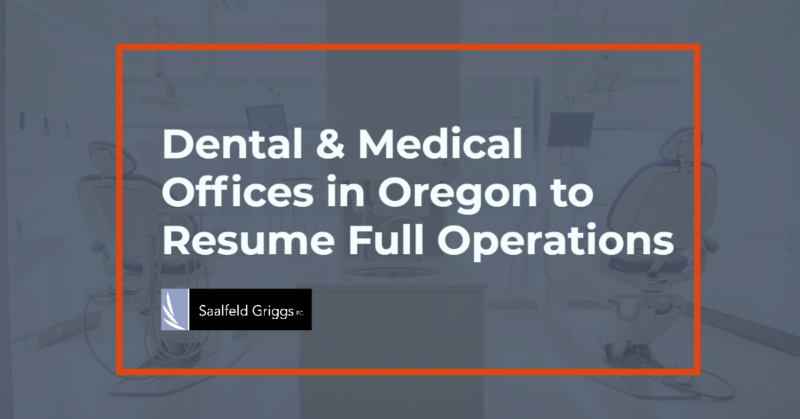By Douglas Alexander, Attorney in the Business & Taxation Law Practice Group, and David Briggs, Attorney in the Employment Law and Litigation Practice Groups
On March 20, 2020, Oregon Governor Kate Brown issued Executive Order No. 20-10 which required that Oregon healthcare providers (including both dental and medical providers) cease providing non-urgent care to their patients until June 15th. In addition, providers were required to identify any surplus personal protective equipment (PPE) in their possession and contribute that to the State. As a result, health care and dental offices have been operating on a very limited basis only providing emergent care.
Today Governor Brown has announced that she is lifting her order delaying non-urgent procedures for health care providers “as long as they can demonstrate [that] they have met new requirements for COVID-19 safety and preparedness. Hospitals, surgical centers, medical offices, and dental offices that meet those requirements will be able to resume non-urgent procedures on May 1.”
In order to resume practice for cases, other than urgent and emergent cases, practices must show:
- That they have adequate personal protection equipment on hand;
- That they start in a way to minimize the possibility of the transmission of the virus, which includes sanitizing and social distancing;
- For hospitals and ambulatory surgical centers, they must start at a fifty percent volume of pre-COVI-19; and
- Offices must have a plan in place to be able to reduce services to pre-May 1 restrictions should there be a surge in COVID cases
Information related to proper ways to minimize transmission of the disease can be found in a number of areas, including Governor Brown’s initial order, which you can find here, as well as from the CDC, which can be found here. The Oregon Medical Association has information here. The Oregon Dental Association also has information, which can be found here. The Governor also referenced the Oregon Health Authority’s page as a resource for practices, which can be found here.
Practices are encouraged to treat more urgent issues first. But, the Governor’s office clarified that there is no restriction to beginning cosmetic treatments for patients.
There are some concerns for practices as they move back into a more regular workflow. Many of these have been addressed on a small scale as practices have been treating emergency and urgent cases, but consider the following:
- How are patient waiting rooms addressed?
- Is there a designated staff member to sanitize each area after a patient visit?
- Can patients wait in their cars and be called in?
- Do patients open the door?
- Do you have soap or hand sanitizer available for patients?
- How will you ensure that patients are maintaining distance while in the office?
- Are staff members going to be required to wear masks at all times? Or is it only recommended?
The Governor said during her press conference that the state will be looking for violators, but did not directly address what penalties employers may be subject to. Presumably, many of these issues will fall under OSHA’s purview. We have already written about OSHA’s stepped-up enforcement efforts here, which would include potential fines or penalties.
Also related to OSHA, in response to a question on PPE shortages, the Governor stated that employees with concerns about whether their employer has sufficient PPE should contact OSHA. Of course, the presumption from both the questioner and from the Governor was that employees are – or should be – uncomfortable addressing these concerns with their employers. It is yet another lesson that employers need to make a concerted effort to solicit employee input and have their concerns feel welcomed and addressed.
Finally, the governor addressed the fact that many practices donated PPE late last month. It is clear that Governor Brown does not intend to provide supplies back to those practices and that practices will need to purchase new equipment. The current lack of PPE availability may be an impediment to even a soft reopening on May 1st.
Obviously, guidance will be ongoing on how to prepare and issues to consider as we move toward May 1. Please stay tuned to updates at www.sglaw.com.
Douglas Alexander is a partner in the Business & Taxation Law practice group, and a member of the Dental and Health Law industry teams. David Briggs is a partner in the Employment Law and Litigation practice groups, and a member of the Agri-Business, Dental and Health Law industry teams. The information in this article is not intended to provide legal advice. For professional consultation, please contact Doug at dalexander@sglaw.com or David at dbriggs@sglaw.com, at Saalfeld Griggs PC. 503.399.1070. © 2020 Saalfeld Griggs PC


